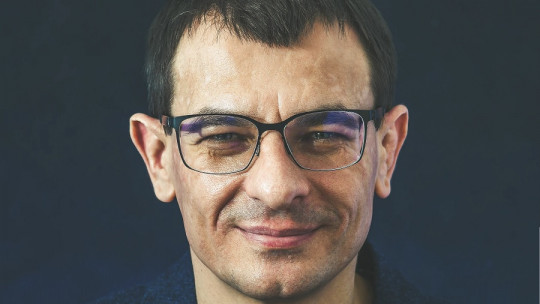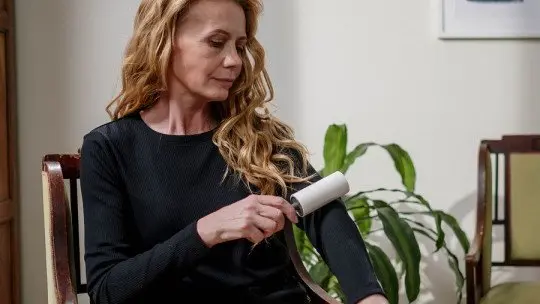Obsessive-Compulsive Disorder is a very complex psychiatric condition, in which obsessive ideas of all kinds occur, the anxiety of which is calmed through all types of compulsions and ritualistic behaviors.
Focused on treating anxiety and avoiding compulsive behavior in patients with this disorder, There are several strategies that are used to treat OCD in psychotherapy; let’s delve into them.
Characteristics of OCD
Obsessive Compulsive Disorder (OCD) is a mental disorder that is characterized by the patient having intrusive ideas in the form of obsessions that cause anxiety, and to reduce the associated symptoms you need to perform certain rituals or compulsions. These compulsions serve to reduce anxiety and acquire the feeling of security that nothing bad is going to happen.
For example, we have a patient with the obsessive idea that he may choke to death while eating. When he has to eat he feels very anxious and cannot stop thinking at any time about the possibility of choking (obsession). To ensure that he does not choke, he does not eat any solid food and makes sure that everything he eats is well crushed, checking it before putting it in his mouth and, once there, he chews it ten times (compulsion). .
OCD is a fairly complex disorder, with many different types of obsessive ideas, ritualistic behaviors and compulsions, with different degrees of anxiety and fear.
Fortunately, There are different therapeutic strategies, both psychological and pharmacological. that serve to improve the quality of life of patients and even eliminate their symptoms. However, the effectiveness of treatment depends on how quickly and early the disorder is diagnosed. Without a diagnosis of the disorder, there can be no good treatment.
It is considered that The most appropriate tool to treat OCD is psychotherapy , there is a certain consensus that it offers greater short-term benefit and has longer-lasting positive results than pharmacology. It is for this reason that, as a general rule, in mild-moderate cases it is recommended to start with psychotherapy and, depending on how the patient responds to the treatment, it would be decided whether or not to combine it with medication. The combination of psychotherapy with psychotropic drugs is often used in severe cases of OCD.
Throughout the following points, we are going to find out what strategies are used to treat OCD in psychotherapy, in addition to giving some insights into what psychopharmacological treatments exist, along with brain stimulation and the importance of psychoeducation.
Psychotherapy
The psychotherapeutic approach to OCD focuses on intervening on the rituals and avoidant behaviors (compulsions) that the patient carries out to reduce the anxiety associated with the presentation of a stimulus or the intrusion of an unpleasant idea (obsessions).
In most situations, the goal is ensure that the patient does not perform rituals associated with obsessive ideas and that he gets used to them or controls them in such a way that they do not represent too much disruption in your life.
Now we are going to see a few strategies used to treat OCD in psychotherapy, some of them typical of strategic psychological therapy, one of the psychotherapeutic approaches considered effective for the management of this disorder.
1. Exposure with response prevention
This therapy is based on the idea that, when we expose a person to what causes anxiety or phobia, in a progressive and controlled way, they will become accustomed to it and, as time passes, the levels of anxiety that may occur. produce such a stimulus will be increasingly smaller.
In the specific case of OCD, exposure and response prevention involves making the patient expose himself to that object that he fears or that every time he thinks about an obsessive idea such as dirt, order, pollution, he exposes himself to them, but resists the impulse to do his compulsive rituals, those he did to ensure that he controlled the situation or that helped him calm down.
Exposure and response prevention It involves a lot of effort and practice but it is possible that the patient will achieve a better quality of life once they learn to manage their obsessions and compulsions.
2. Counterrituals
Let’s imagine a patient with OCD who always, before leaving the house, has to check that absolutely everything is closed or in a certain way. He checks the gas, checks that all the lights are off, that the door is properly closed, that the tap is not dripping… but, despite having done so, just when he is already on the street, doubt arises and he has to go back to home to check everything again.
One of the strategies used to deal with this behavior is what psychologists call “counterritual.” make your compulsive ritual become more tedious and time-consuming something that over time ends up being unsustainable to maintain.
For this specific case, the patient could be asked that, every time he feels the urge to have to check what he has done again and does so, he should check it not once, but five times. He will do everything five times, leaving and entering your house each time he has done it, but only if he has had to check it again after checking everything the first time.
By having to apply this new ritual, the patient is much more likely to avoid checking everything again the first time. for the simple reason that you don’t want to waste any more time and you know that a new revision would mean revising everything five more times.
3. The violation of ritual
There are cases of patients with OCD who have many rituals, so many and so varied that it is difficult to classify them. In these cases, the strategy of ritual violation can be applied, asking the patient to choose one of his many rituals each day and make the effort not to carry it out while you have complete freedom to continue doing the others.
This strategy is based on the idea that, first, the patient manages to violate his own routine, even if he does it in a different way every day. The simple fact of having to deprive yourself of doing a compulsion when you have an obsessive idea or a stimulus that generates fear is already an advance, which can help you understand that compulsions are not necessary to reduce your anxiety if you get used to what you do. provokes her.
As the months go by, the patient will dare to do without more rituals , reaching the moment when it completely violates its initial ritualistic pattern. That is to say, he goes from a progressive violation to a total violation of the entire list of rituals and compulsions that he did to calm himself.
4. Delay the compulsion
Another strategy used to treat OCD in the context of strategic psychological therapy is to delay the compulsion. For example, the patient may be asked to try to avoid what the obsession tells him or her to do each day and to delay the compulsion.
If you are a patient who needs to wash your hands every time you touch a wooden table, you may be asked to wash your hands after about five minutes. The idea behind this technique is that sooner or later, as time goes by, putting off the ritual will turn into doing without it, perhaps even without realizing it.
5. Ritualize the compulsion
This technique is used in cases where, for example, the patient repeats formulas, lists of words and numbers or pulls out hair throughout the day after performing a certain action or a certain idea comes to mind. Ritualizing the compulsion implies turning it into something more orderly, making it have to be done at a certain time and following a much more complex ritual.
For example, a patient who repeats the multiplication tables every few minutes while thinking about how bad she was at mathematics when she was little (intrusive thinking) can be asked to do just this, repeat the multiplication tables, but that only when the clock strikes an even hour on the dot (10, 12, 14…). When this condition occurs, the patient should go to the nearest bathroom, look in the mirror and, for 3 minutes, repeat the multiplication tables without rest.
This strategy means that the patient, although he continues to carry out the compulsion, now has control over it. He used to do it at any time of the day, potentially intruding on his work schedule or while he was doing a leisure activity. Now, By having a schedule where you specify when you allow that compulsion to take place, you turn it into a controlled habit. and, with the passage of time, you will be able to do without its use.

Psychopharmacology
The first psychotropic drug that showed great utility in the treatment of OCD was marketed in Switzerland in 1966: clomipramine.
Since then, no pharmacological treatment has been discovered that has been more effective than this tricyclic antidepressant, but safer medications have been discovered, with fewer side effects and a lower risk of interaction with other drugs. The most used are SSRIs which, together with clomipramine, constitute a group of antidepressants with anti-obsessive properties.
The drugs approved for treating OCD are:
- Citalopram (Prisdal ®)
- Clomipramine (Anafranil ®)
- Escitalopram (Esertia ®)
- Fluoxetine (Prozac ®)
- Fluvoxamine (Dumirox ®)
- Paroxetine (Seroxat ®)
- Sertraline (Besitran ®)
There are other drugs that, despite not having been approved by government agencies, contain active ingredients that could be useful for the treatment of OCD, one of them being Venlafaxine (Vandral ® or Dubupal ®).
- You may be interested: “Types of psychotropic drugs: uses and side effects”
brain stimulation
There are two techniques used as a treatment for OCD that cannot be included in either psychotherapy or psychopharmacology: two forms of brain stimulation. These techniques are unorthodox methods, used as alternative therapy when drugs and psychotherapy have not proven to be useful, especially in the most serious cases.
1. Deep brain stimulation
Deep brain stimulation is a therapeutic strategy approved in the United States by the FDA (Food and Drug Administration) to treat OCD in adults 18 years of age and older who have not responded to more traditional treatments. This procedure involves implanting electrodes in certain areas of the brain which produce electrical impulses that can help regulate obsessions and, above all, compulsions.
- You may be interested: “Transcranial magnetic stimulation: types and uses in therapy”
2. Transcranial magnetic stimulation
Also approved in the United States by the FDA, transcranial magnetic stimulation is used in adults with OCD between the ages of 22 and 68. This procedure is non-invasive, and involves using magnetic fields to stimulate brain nerve cells. and improve the symptoms associated with the disorder. During a transcranial magnetic stimulation session, an electromagnetic coil is placed on the scalp near the forehead. This electromagnet produces a magnetic pulse that stimulates nerve cells in the brain.
Psychoeducation
As a final point, we want to highlight the importance of psychoeducation before applying psychotherapeutic and psychopharmacological tools to the patient. It is essential that the patient has a correct understanding of their disorder before starting treatment and beginning the path to recovery.
It is preferable that the information that the patient receives about OCD comes directly from their psychotherapist, but in practice this is complicated given that we live in a world where ICT has conquered all aspects of people’s lives. It is very likely that the patient has already documented herself previously, and it is possible that she has done so by finding information that does not correspond to reality or is reliable.
For this reason, one of the tasks of the psychologist during the psychoeducation phase and before starting therapy is to see what wrong ideas or myths the patient may believe, try to counteract them with real and truthful information and explain to him what the fundamental features of his psychopathology are. . This part can help a lot in her recovery, since the patient can understand that this problem does not only happen to him or her, and that there are proven therapies to improve her or his health.









